The museums of the Franciscans in Jerusalem, 120 years at the service of Christian history in the Holy Land
This year the Terra Sancta Museum celebrates its ten years of existence. However, this project, started by the Custos Emeritus Fr. Pierbattista Pizzaballa in 2012, does not mark the start of Franciscan museums in Jerusalem. It is the heir of an initiative that put down its roots at the very beginning of the last century. Let’s look back at 120 years of history…

It was in 1902, on the initiative of the Custos Frediano Giannini, that a “museum of the Franciscan fathers” in Jerusalem opened for the first time. We have to go back a further forty years however to fully understand the genesis of this project: in 1863, when work as being done in St Catherine’s convent in Bethlehem, a set of objects from the Middle Ages was dug up under the present-day cloister, later called the “Treasure of Bethlehem.” This is what gave the impulse to create the first museum and formed the heart of its collections. The numerous vases from the old pharmacy and some Egyptian archaeological objects [1] were also included.
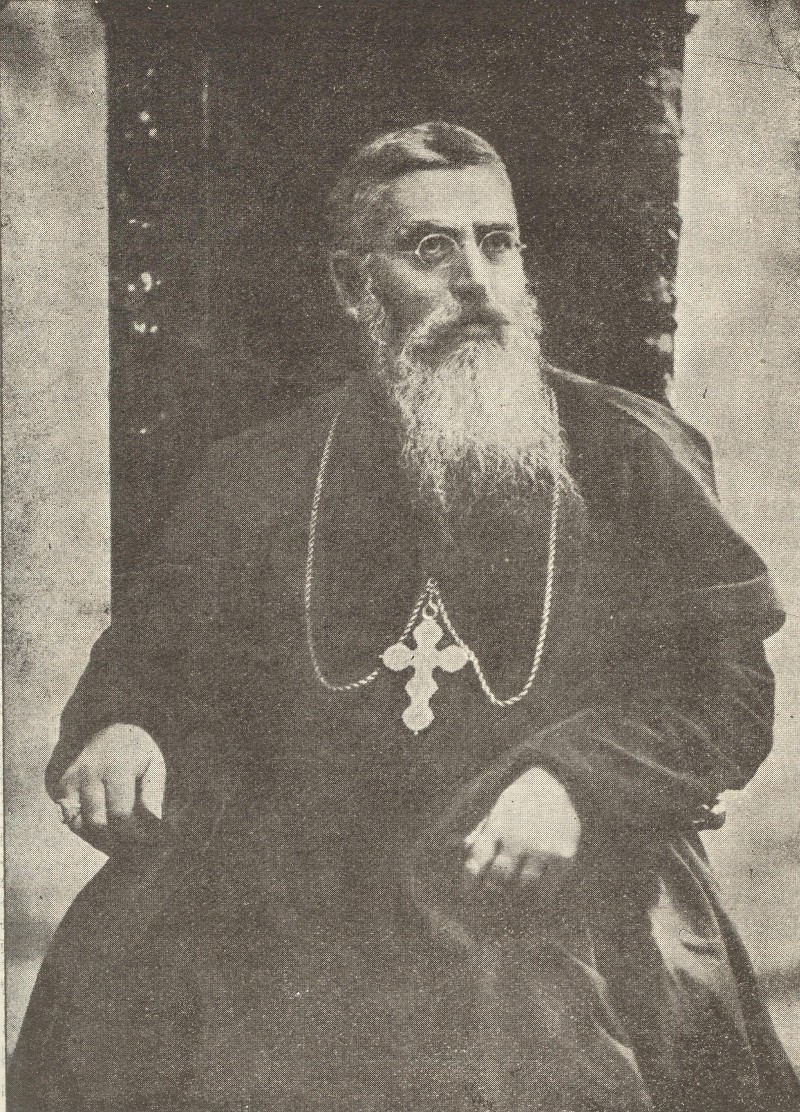
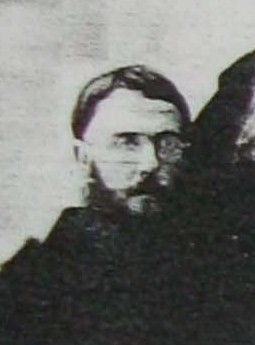
Its first director was the French friar Prosper Viaud (guardian of the Nazareth convent and creator of the Franciscan Museum in the same place), assisted by Friar Émile Dubois. Conceived as an annexe to the Studium Biblicum Franciscanum (SBF – faculty of Biblical and archaeological studies), created a year earlier, the museum gradually became richer with the excavations of the SBF and gifts from friars such as Giacinto Tonizza (Islamic coins) and Cleophas Steinhausen (Egyptian objects). Located in St Saviour’s Convent, its exact position has not yet been identified with any certainty, although the discovery in 2017 of a plan of the convent dating back to 1938 allowed making some hypotheses.
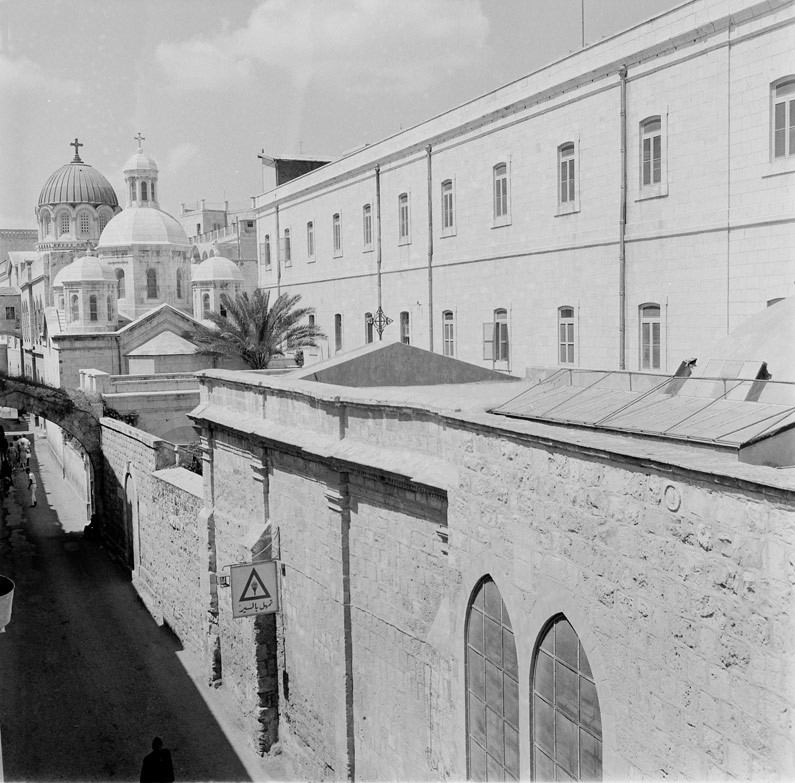
In 1927, this first museum closed and its collections moved with the SBF to the Convent of the Flagellation.
A new museum opened its doors in 1931 on the ground floor of the convent, with at its head Friar Sylvester Saller, an American archaeologist who directed countless digs on the shrines of Ein Karem, Bethany or also Mount Nebo in Jordan, for example. The museum continued to be enriched by the digs of the SBF but also by a collection of coins that is unique in the world, put together by the Dutch friar August Spijkerman who succeeded Sylvester Saller in 1954. More surprisingly, the museum also housed a room dedicated to the fauna and the flora of Palestine, created by Friar Gianmaria Amadori. The first visitor’s guide to the museum was published in 1939 by Friar Bellarmino Bagatti and was printed by the Franciscan Printing Press in St Saviour’s Convent.
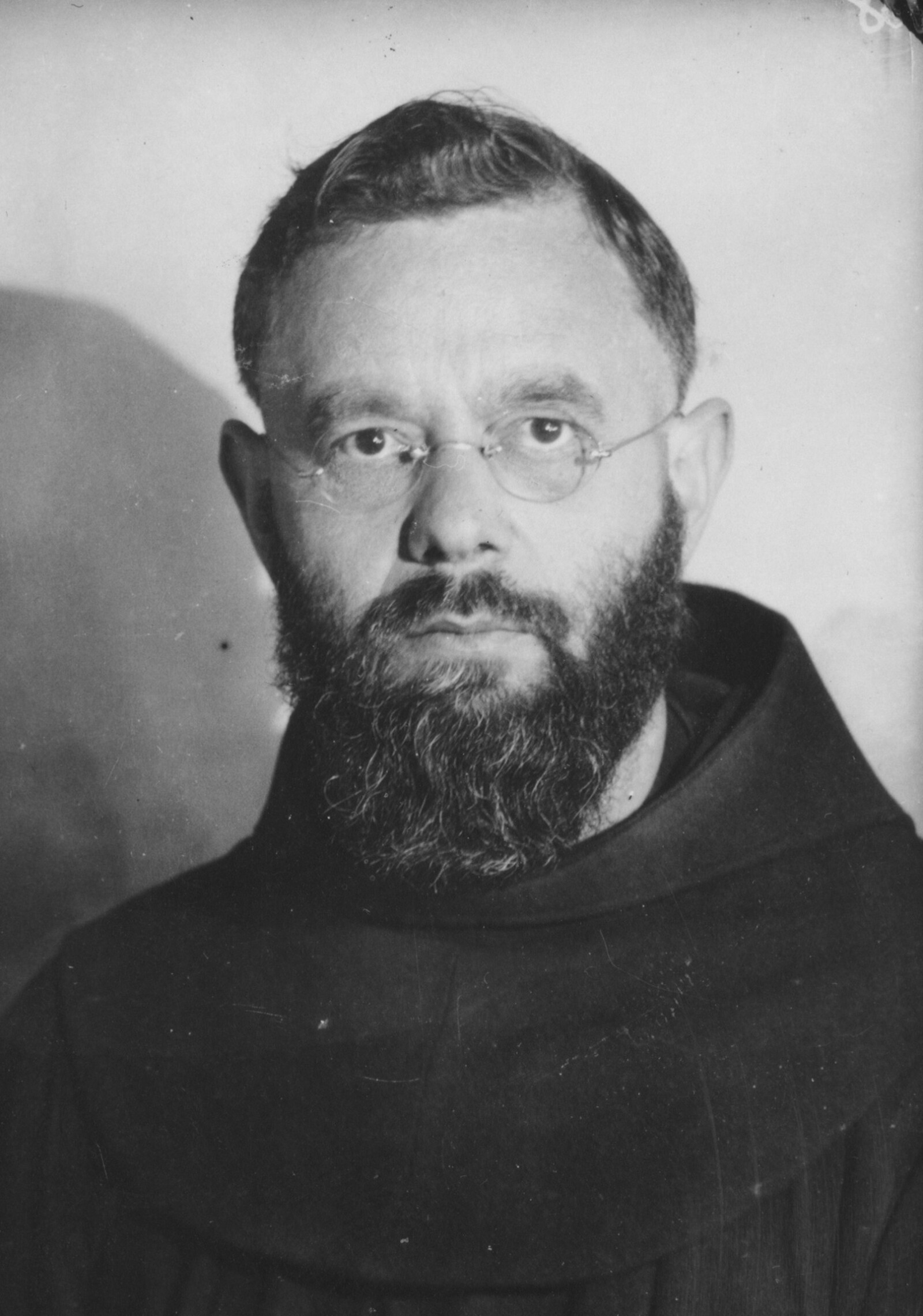
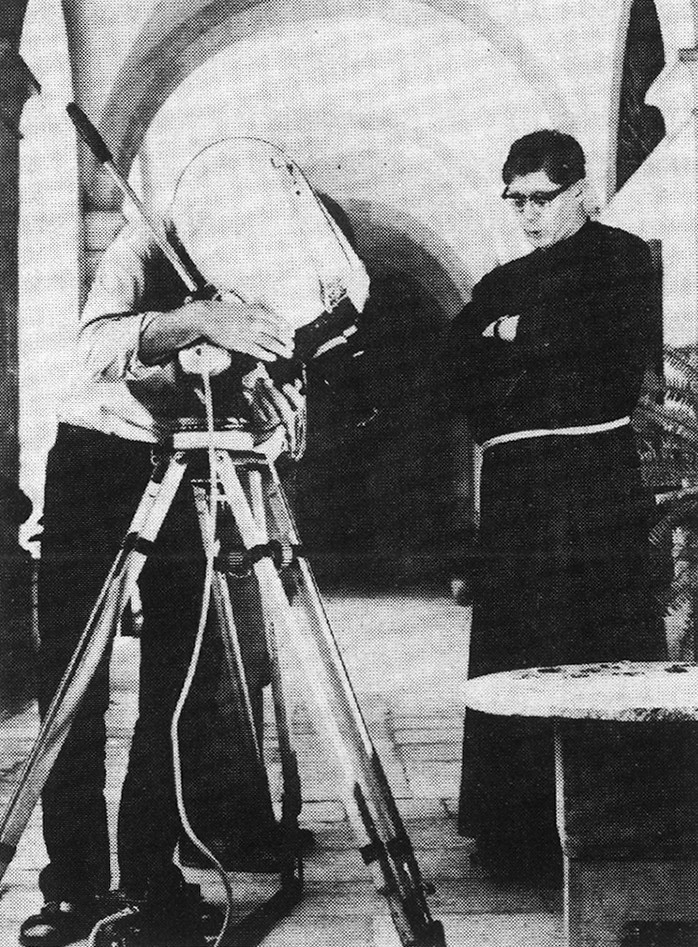
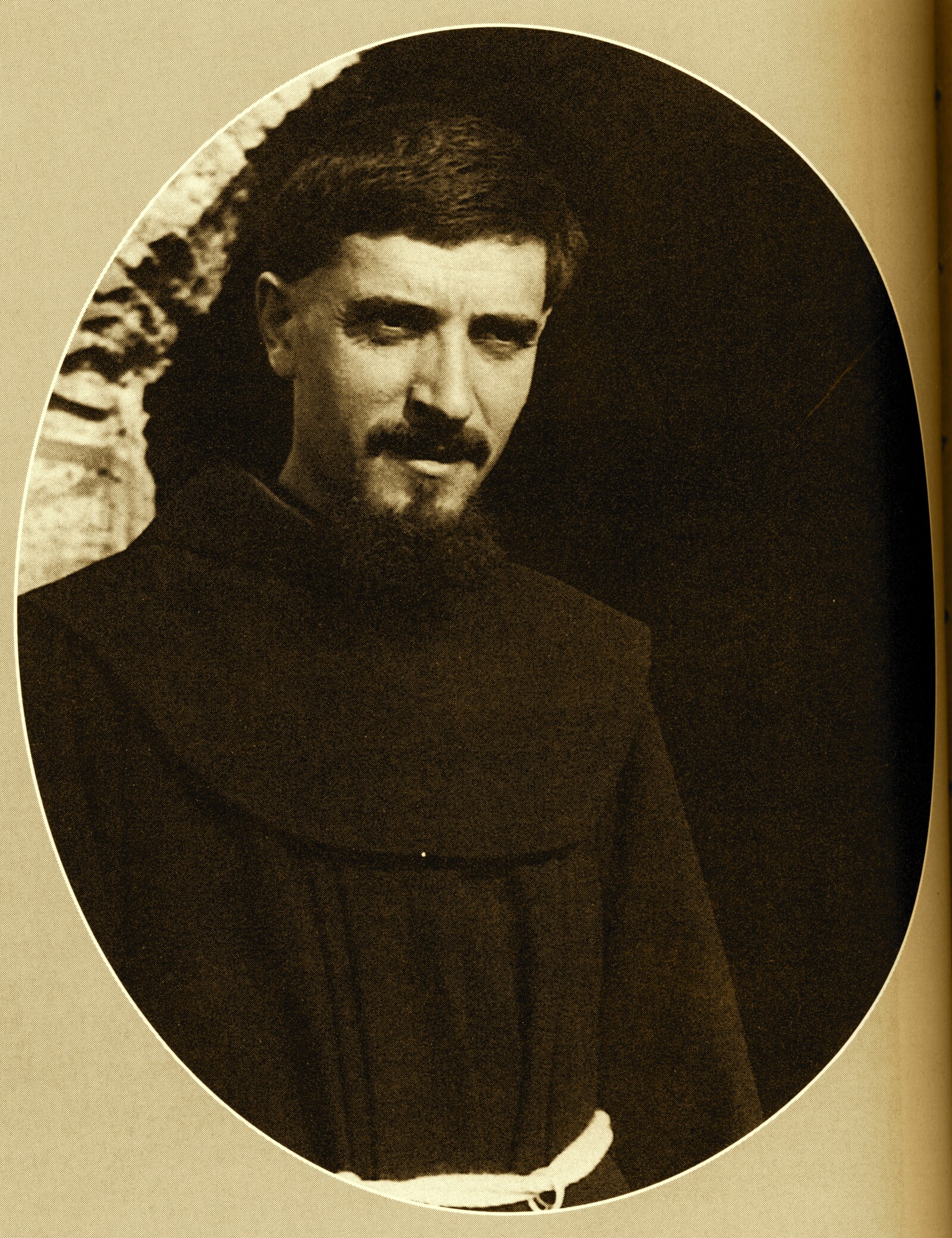
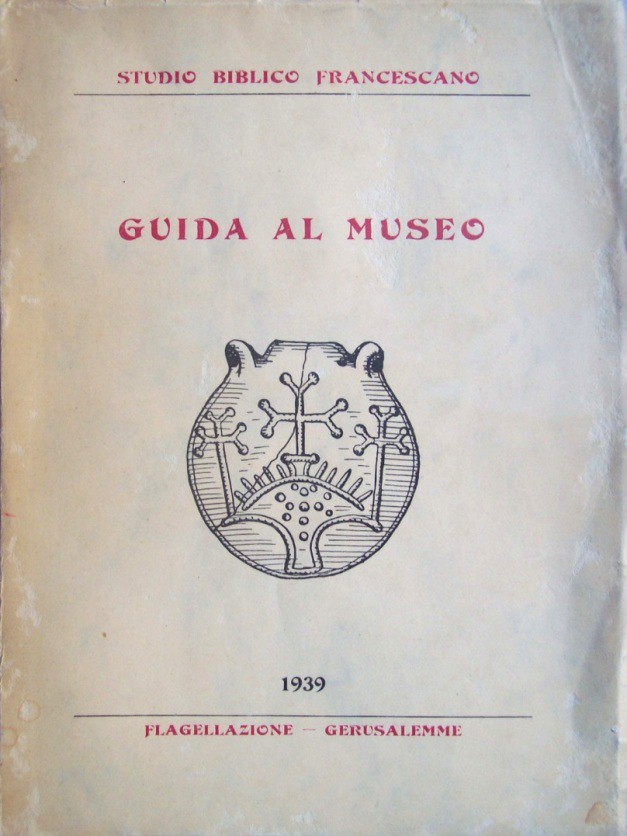
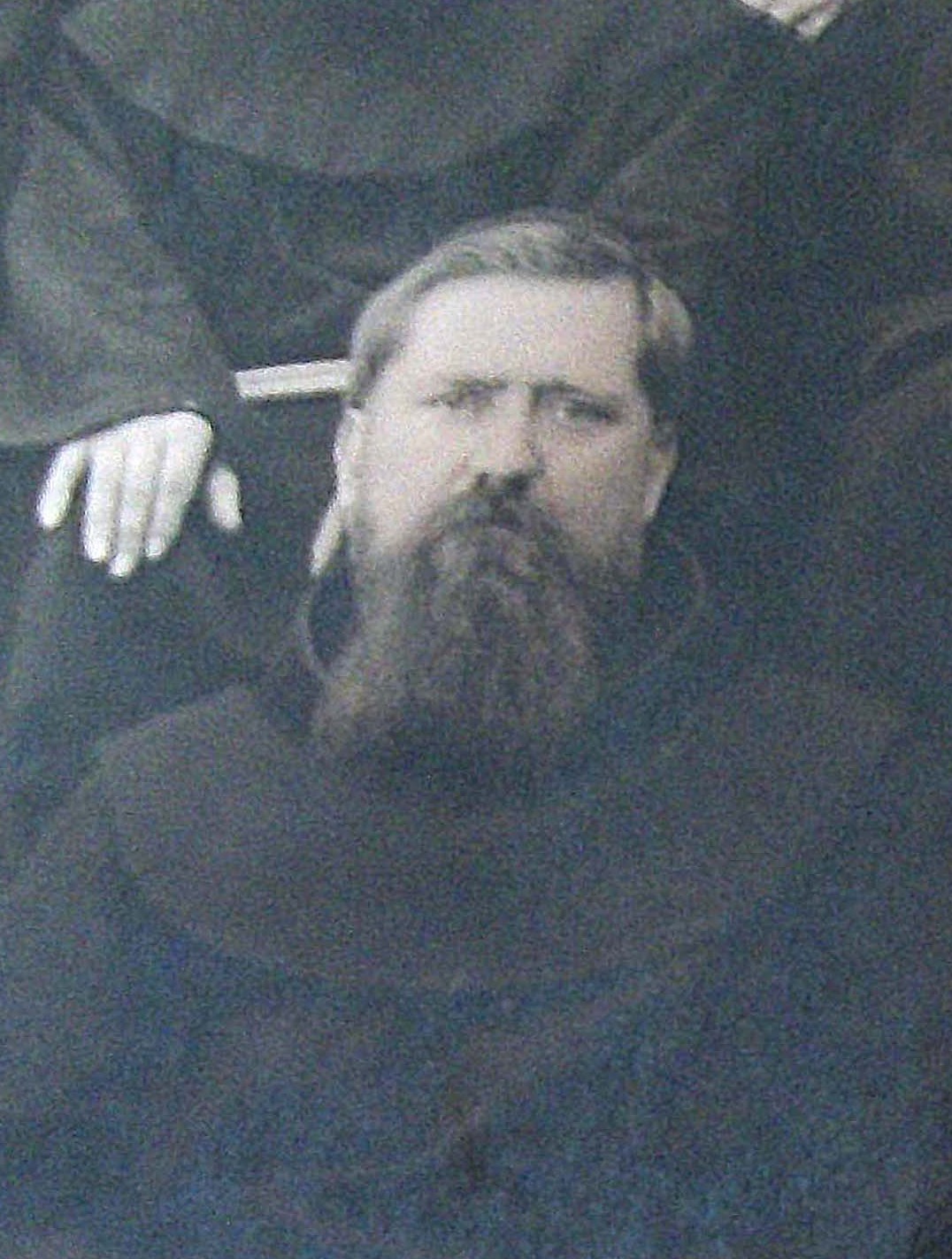
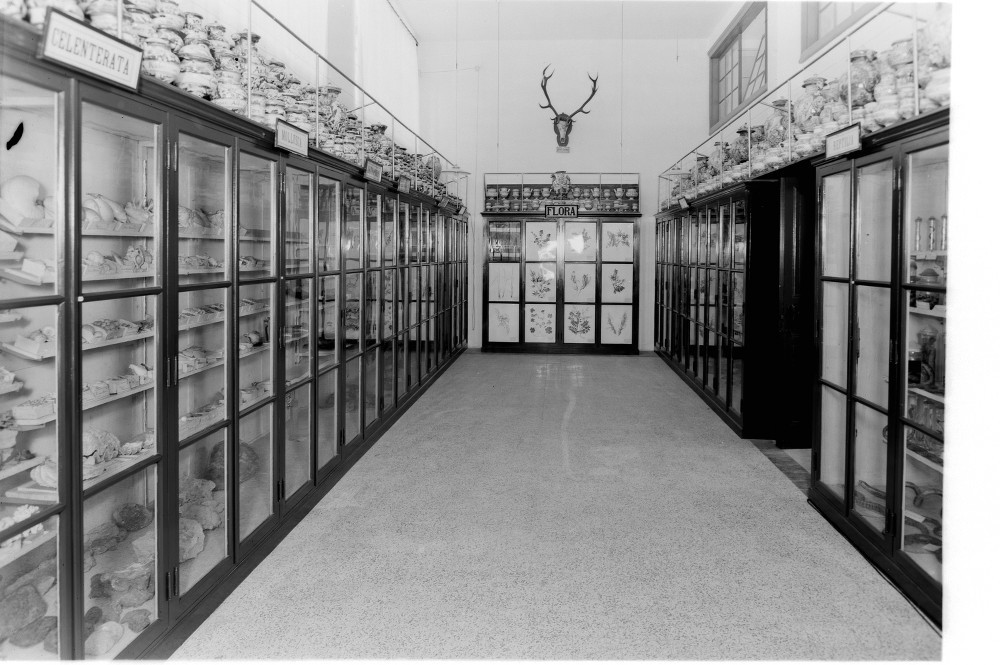
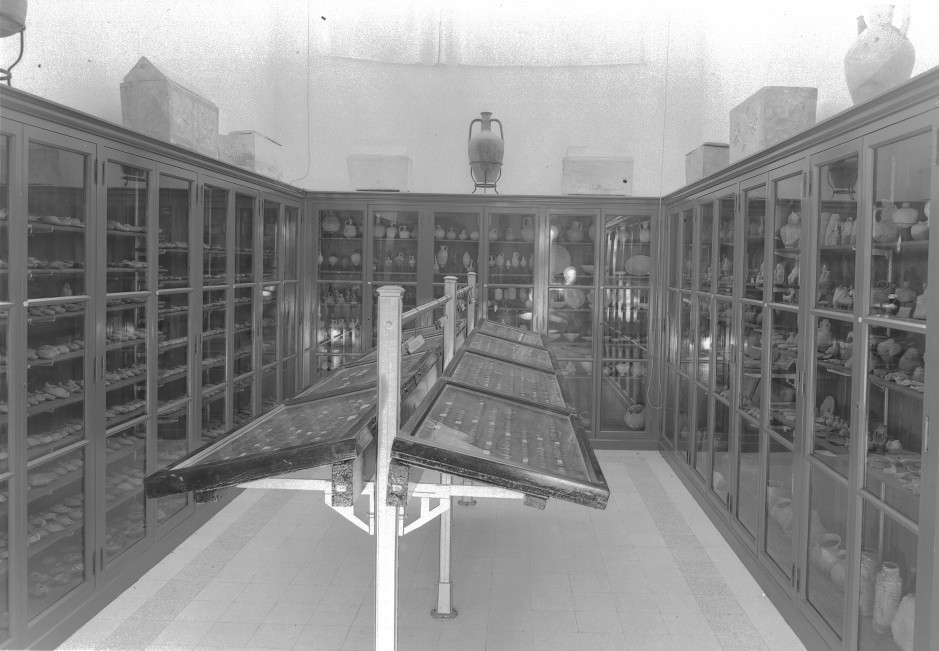
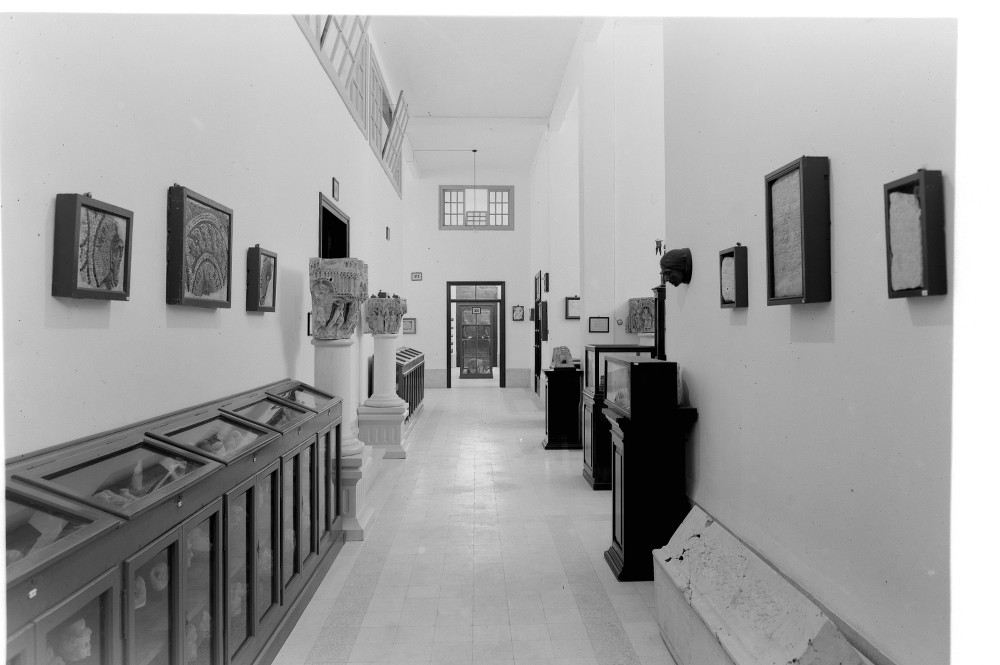
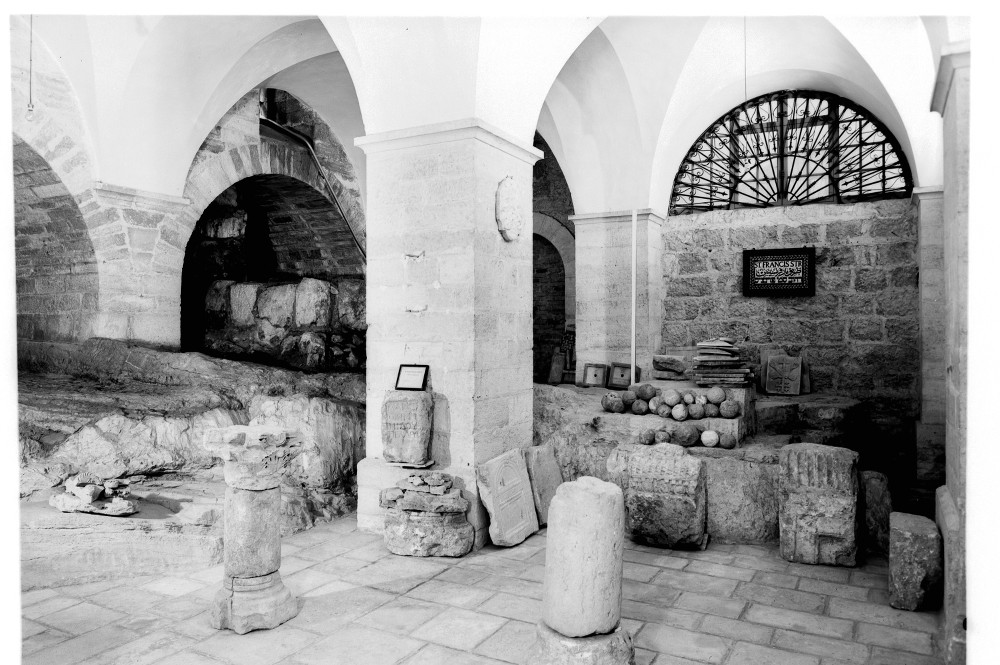
The arrival of Friar Michele Piccirillo (aged only 29) at the head of the Museum in 1974 marked a new stage for the museum.
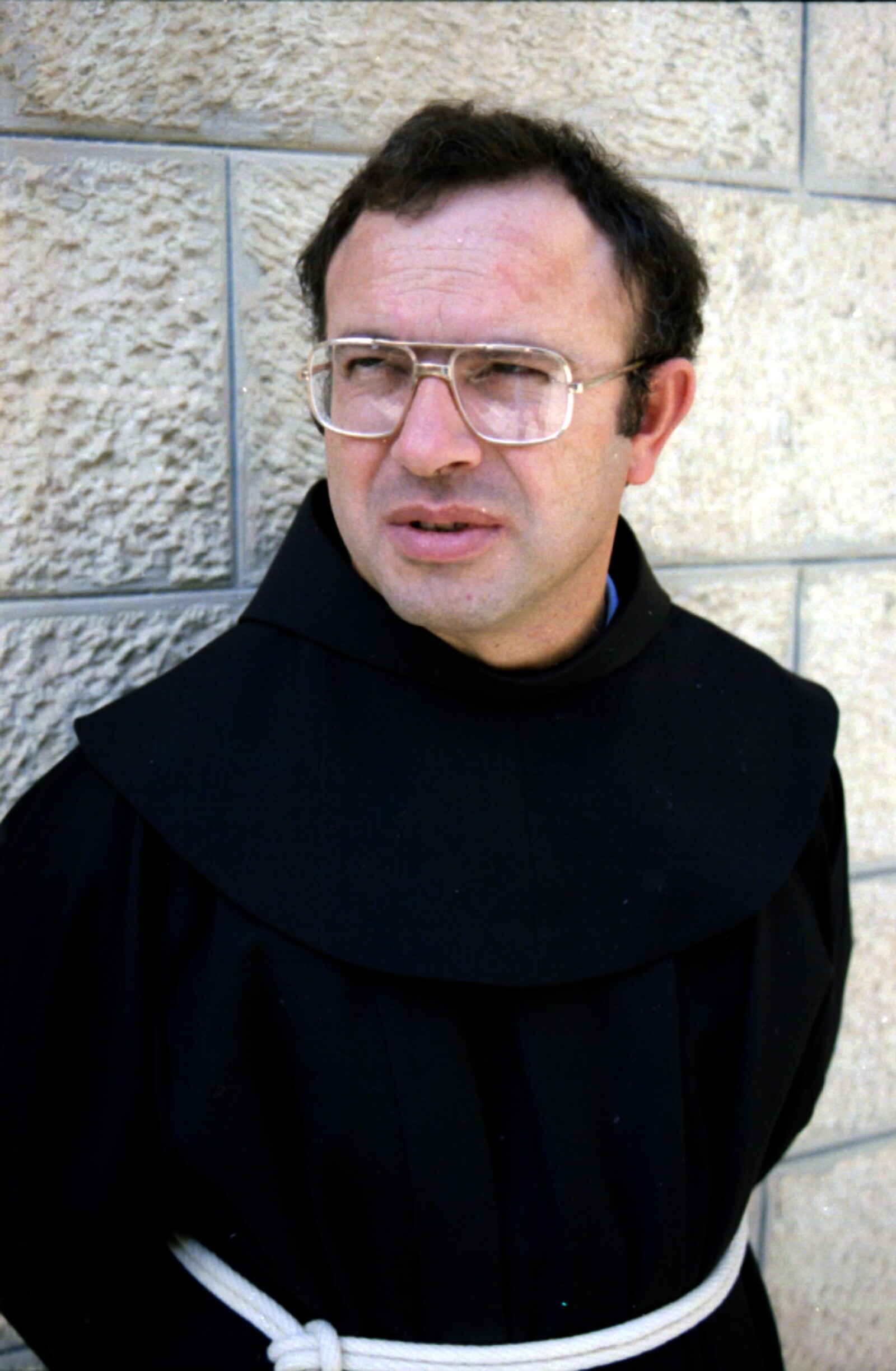
“In October 1974, I received the privilege of directing the Museum, already renowned in the scientific world for its collections of great historic value. It was necessary to reorganize the museum. In the meantime, the lecturers of the Studium had continued the archaeological digs […]. The contribution of these digs was such that the collections ended up being too large and without anywhere to go. To keep the cultural and educational function of the museum and prevent it from becoming a sort of chaotic warehouse, a selection had to be made of the pieces on display […]. Previously, when the over-abundance was not a problem, the classification was based not on the origin but on the nature of the pieces. […] The growing importance of pieces from the scientific excavations led us to present the objects according to the [sites of the] digs.” [2]
In parallel with this new arrangement by the places of origin of the objects, the number of objects per case was reduced – to keep only the most significant ones – and texts and pictures were introduced to improve the educational qualities of the museum. This spirit still impregnates the archaeological section of the Terra Sancta Museum.
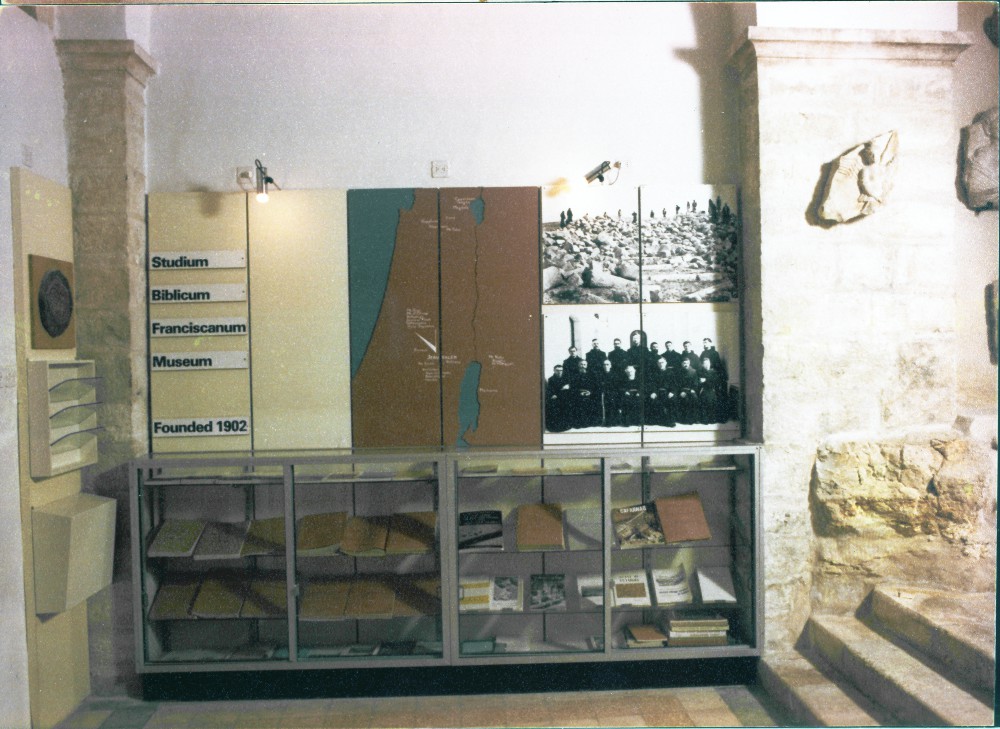
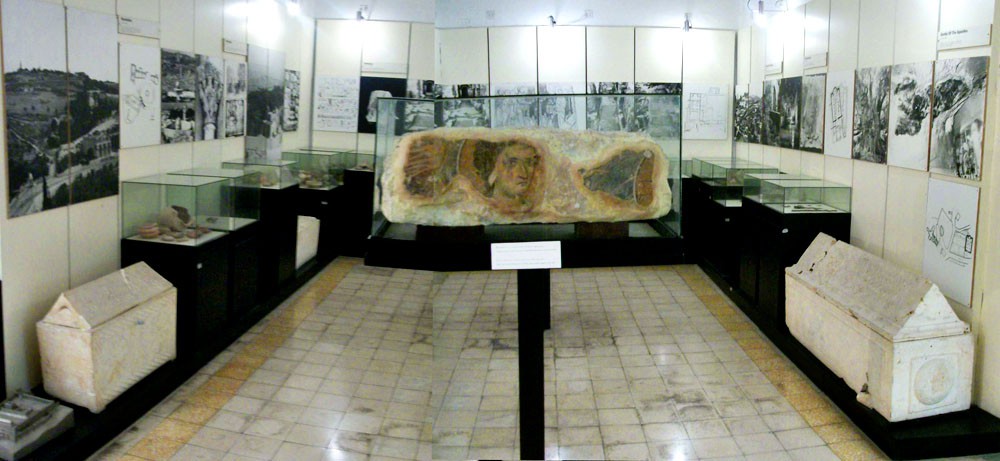
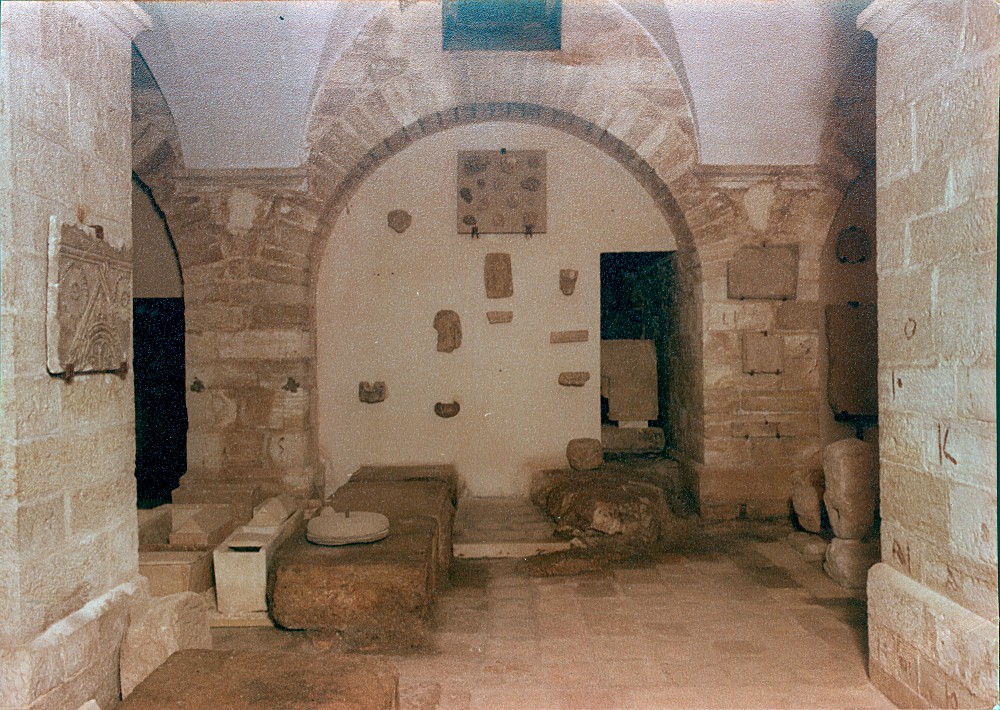
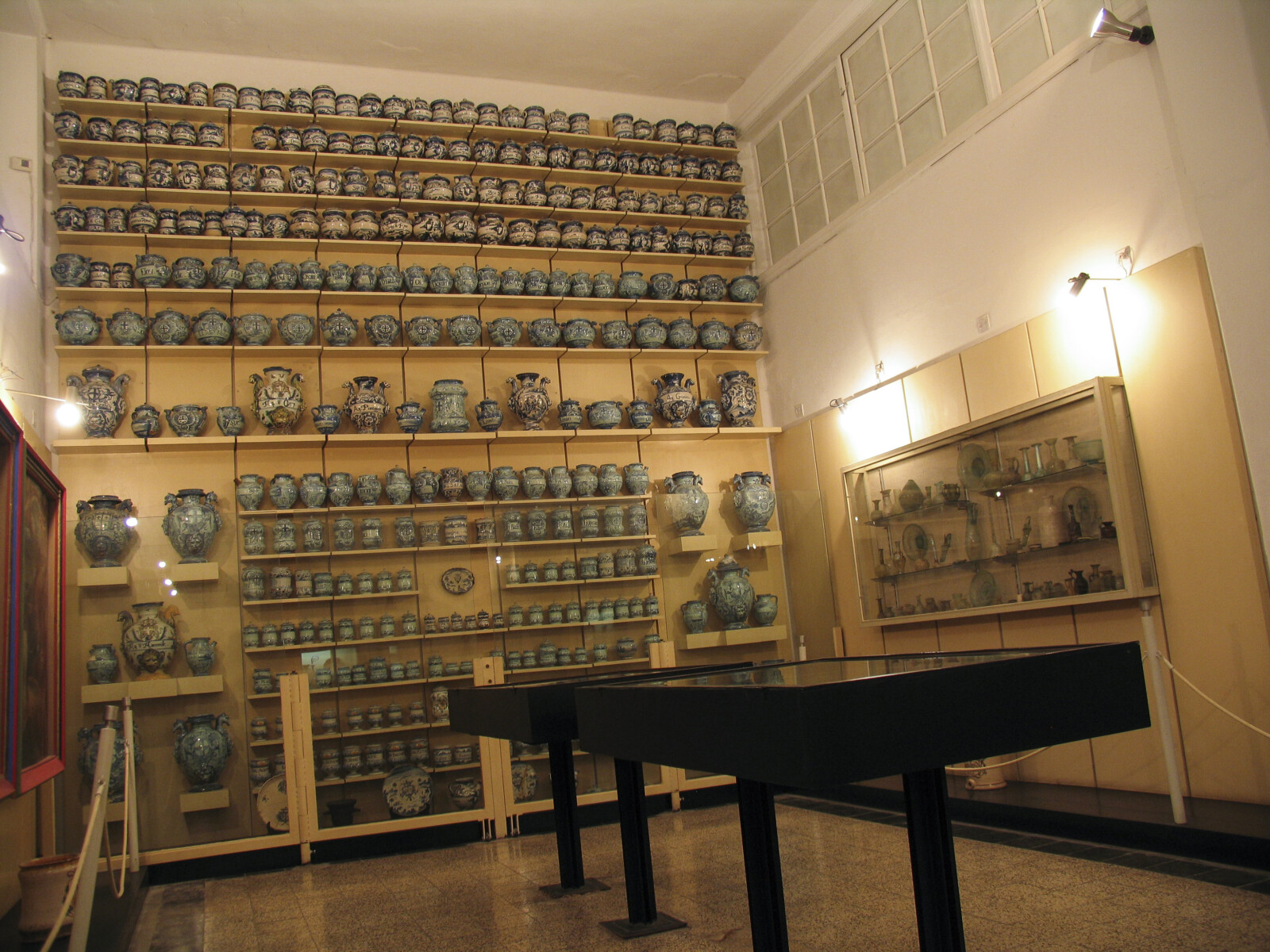
The last stage was from 2005. In view of the continuing growth of the collections of the archaeological museum and following the wish to reorganize the premises, a new project saw the light of day, aiming to renew and increase the space dedicated to the museum in the Convent of the Flagellation. However, this project was not achieved and it was in 2012 that the project of the Terra Sancta Museum was launched. More ambitious, it contemplated the merger in a single museum of the archaeological and historical collections of the Franciscans of the Holy Land, but their display on two different sites:
- The Convent of the Flagellation continues to house the archaeological collections (of which a part opened in June 2018) and they are given a multimedia section (inaugurated in March 2016).
- St Saviour’s Convent is organized on its ground floor to present the historical collections, on the same occasion linking back to its past.
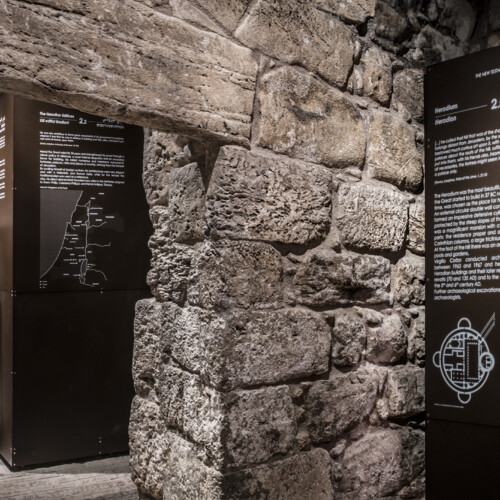
SBF – Archaelogical museum
The direct heir of the museum that preceded it, the new museum of the SBF will concentrate this time solely on archaeology (the Treasure of Bethlehem and the old pharmacy in particular have been transferred to the historical section)Directed by Friar Eugenio Alliata (since 2009), an archaeologist and former collaborator of Michele Piccirillo, supported by Daniela Massara, it resumes the logic of display by place of excavation started by Michele Picirillo and once again expands the educational dimension by providing more explanatory texts and illustrations to give rhythm to the route of the visit. Dedicated to the first millennium, the museum will be organized in four parts: the Franciscan shrines, the period of the New Testament, the monastic era, and a last part consecrated to the particular collections (Egyptian, epigraphic [3], and gifts of Franciscan friars [4]). Today only the second part was able to open in 2018. “Our leading idea is to present our collections as the archaeological museum of the Christian origins.” [5][3] Collection of ancient texts engraved on stone or tablets. [4] Including the collections of Godfrey Kloetzli (Byzantine and Roman objects) and Michele Piccirillo (bronze Byzantine liturgical objects). [5] By Michele Piccirillo in the brochure of the SBF museum in 1984, p. 10.
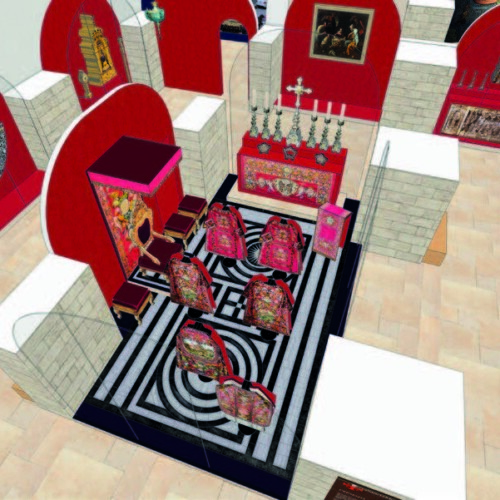
Historical section
The creation of this new museum has its roots in an inventory campaign launched in 2007 by the Custody of the Holy Land in all its shrines. Gradually becoming aware of the extent and of the value of its collections, the Custody of the Holy Land created a new department, the Department of Cultural Heritage, and decided to open a museum presenting its collections of vestments, gold and silver work, icons, local craftsmanship as well as certain documents of archives presenting the history of the Franciscans in the Holy Land. «The gestation of this museum was the occasion, for the Custody, to reclaim its heritage,” comments Friar Stéphane Milovitch, Director of the Cultural Heritage.
The project was reviewed in 2014, after the exhibition-event of its collections at the Chateau of Versailles in 2013 and the formation of an international scientific committee on the initiative of Béatrix Saule, Director Emeritus of the Château de Versailles. The museum will be organized in two parts: the history and the mission of the Custody of the Holy Land, with in particular a focus on the local church and its productions; the “Treasure of the Holy Sepulchre”, grouping together the liturgical collections of the Custody and its links with the great European courts of royalty.
Dedicated to the second millennium, this museum aims to be that of the Christian presence in the Holy Land. It should open its doors in 2023.
(Translated from french by Joan Rundo)
[1] « […] from the excavation of the west part, precisely in a perpendicular line under the present-day kitchen window and at a depth of approximately five cubits, there appeared first of all a chandelier that was broken at the level of its foot […] Only the largest two bells are kept in the convent. All the other objects mentioned are in our Convent of St Saviour and will form, with other things, a small museum.” (Father Arcangelo Montefano, Mémoire du couvent de Bethléem, 30/11/1863).
[2] By Michele Piccirillo in the brochure of the SBF museum in 1984, p. 9.



